Compiled by Dean A. Enderlin
(Member, Col. Elmer E. Ellsworth Camp, No. 23, SUVCW)
(Member, Col. Elmer E. Ellsworth Camp, No. 23, SUVCW)
|
|
||
| To honor St. Helena's hometown veterans who
served in the "War of the Rebellion" 1861 - 1865 . . . |
||
Compiled by Dean A. Enderlin
(Member, Col. Elmer E. Ellsworth Camp, No. 23, SUVCW) |
| Civil War Veterans in St. Helena
Public and Holy Cross Cemeteries |
Countless veterans of the American Civil War migrated through the
American West
after the conflict, and many passed through the streets of St. Helena,
Napa County, California. Some made their visit a short one, while
others chose
to live the remainder of their lives in this town. Many
still rest here in St. Helena's cemeteries.
This website
is my small attempt to honor and preserve the memory of those soldiers
and sailors who offered their service in one of the darkest times in
our country's history. It is the second website of its type that
I have launched; the first one being devoted to Calistoga's
Civil War veterans. This work is a labor of love and respect
for those
veterans whose final resting place is in the Napa Valley of California.
Research still continues, so this website should be considered a work in progress. I will update it as new information becomes available. If anyone reading this has additional information on Civil War soldiers or sailors who lived in St. Helena or other parts of the upper Napa Valley, I would love to hear from you! There is always room for improvement here! Please scroll down to view the website content, or click on a link at left to jump to a topic. Dean Enderlin
Calistoga, Napa County, CA Moved website from
Rootsweb Freepages to new host (Freepages were shut down in 2017). Coming
Soon: An online map of St. Helena Public
Cemetery, showing burial locations of Civil War veterans.
|
||
| St. Helena's Kilpatrick Post, No. 38, G.A.R. |
|||
| St. Helena's Kilpatrick Corps, No. 12,
W.R.C. |
|||
| St. Helena's Last Civil War Veteran |
|||
| The 1886 G.A.R. Excursion Train to
St. Helena |
|||
| Acknowledgments and Links |
|||
| How to Contact Me |
|||
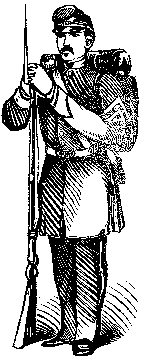 |
 |
||
St. Helena
Public Cemetery is the largest of the cemeteries in the upper Napa
Valley. As such, it was the burial site for citizens from many of
the surrounding communities and districts, including Calistoga,
Rutherford, Oakville, Angwin, Deer Park, and Pope Valley. The
cemetery was established in 1856 and incorporated in 1873.
It is still active. The
cemetery is located at 2461 Spring Street in St. Helena (about a mile
southwest of the intersection of Spring Street and State Highway 29).
Over 13,000 individuals are buried in St. Helena Public Cemetery. Among them are dozens of veterans of the American Civil War (Union and Confederate). In addition, the cemetery contains at least two Civil War nurses. To view the list of all known Civil War veterans known to be buried in St. Helena, click on the following link. There is a huge amount of biographical information here, and the file is growing as new information comes in . . . ! Among the civilian notables buried in the cemetery is Rebecca Pickens Green (1833-1916), widow of General Duff Cyrus Green (1828-1865). Gen. Green was Alabama's Quartermaster General (state militia) during the Civil War. Rebecca's headstone proudly proclaims her relationship to the General. Another notable civilian with Civil War ties, buried at St. Helena Cemetery, is James Ignatius Logan (1829-1915), the local carpenter and undertaker. Although James I. Logan never enlisted, he helped organize a company of men in his hometown of Centralia, Illinois, and vowed to see to it that every member of that company returned home . . . alive or in a coffin. Only thirty-two of the company of about one hundred men survived the war. Logan kept his promise, and in so doing, honed his undertaking skills on the battlefields. Under special dispensation from command, he (a civilian) was allowed to spend over a month on the battlefields, gathering the bodies of the "boys in blue" he had sent to war. It is said that he shipped over thirteen railroad carloads of embalmed remains, along with personal effects, back home. It was a pioneering -- although morbid -- achievement in the recovery and proper burial of the fallen from the battlefields. Before the Civil War, such care for the remains of the war dead was rarely seen. Also noteworthy, is that James I. Logan was a first cousin to the father of Gen. John Alexander Logan. General Logan was a distinguished Civil War leader, and among other things, was Commander-in-Chief of the Grand Army of the Republic from 1868 to 1871. General Logan actually visited St. Helena in 1886. More can be read about that in the section about the G.A.R. excursion train, elsewhere on this website. Adjacent to, and just east of St. Helena Cemetery, is the Holy Cross (Catholic) Cemetery, located at 2121 Spring Street. The cemetery was established sometime in the 1930's. Although smaller than St. Helena Public Cemetery, it is also the final resting place of at least three Civil War veterans. As a matter of convenience, the veterans buried in Holy Cross Cemetery are included in the main list of Civil War veterans buried in St. Helena. |
|||
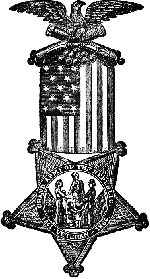 |
 |
|||||||||||||||||||||||||||||||||||||||||||||||||||||||||||||||||||||||||||||||||||||||||||||||||||||||||||||||||||||||||||||||||||||||||||||||||||||||||||||||||||||||||||||||||||||||||||||||||||||||||||||||||||||||
The Grand
Army of the Republic (G.A.R.) was formed in Illinois in April of
1866. Its membership was limited to Union veterans of the
American Civil War, who had served between 1861 and 1865. It was
both a fraternal order, and (for a time) a volunteer reserve
corps of veterans. In addition to the primary organization, the
G.A.R. included women's auxiliaries, known as the Woman's
Relief Corps
(WRC) and the Ladies
of the Grand Army of the Republic (LGAR). In
the
1880's the G.A.R.
established a corps of cadets which evolved into the Sons of Veterans
(SV), and in the 1920's into the Sons of Union Veterans of the Civil
War (SUVCW). Other allied orders included the Daughters of
Veterans (DV), now known as the Daughters of Union Veterans of the
Civil War (DUVCW), founded in 1885; and the Auxiliary to the Sons of
Union Veterans of the Civil War (ASUVCW), founded in 1883.
The G.A.R. was divided into administrative areas called departments, ours being the Department of California (now called the Dept. of California and Pacific). Within each department were numerous community-level organizations, called posts. St. Helena had its own post, officially known as Kilpatrick Post, No. 38. Other nearby towns had their own G.A.R. posts, the nearest being Calistoga's Governor Morton Post, No. 41. At its peak, the Kilpatrick Post consisted of approximately 69 members. The final national encampment of the G.A.R. was held in 1949 in Indiana. Today, the spirit of the G.A.R. is perpetuated by the SUVCW, which is the official successor organization to the now-extinct G.A.R. Today, St. Helena falls within the jurisdiction of Col. Elmer E. Ellsworth Camp, No. 23, SUVCW, based out of Santa Rosa, Sonoma County, California. The camp serves Napa, Lake, Del Norte, and Humboldt Counties, as well as Sonoma, Mendocino and Marin Counties east of U.S. 101. St.
Helena's Kilpatrick Post, No. 38,
G.A.R. was organized in 1881. The post consisted
of fifteen charter members, with the first post commander being St.
Helena's hometown hero, William Thomas Simmons. Simmons had a
long history with the Grand Army of the Republic, having been an
officer in one of the earliest posts (Lincoln Post, No. 2) organized in
Springfield, Illinois, in 1866. He was also a recipient of the
Medal of Honor, which generated much respect among his comrades.
Kilpatrick post was named in honor of the famous Civil War General, Judson Kilpatrick, who died on December 4th of that year (just ten days before the post organized). Kilpatrick was a cavalryman in his early military career, and was known for his aggressive tactics. The inaugural meeting of Kilpatrick Post was held in St. Helena's Masonic Hall (home of St. Helena Lodge, No. 93, F. & A.M.) on December 14th, 1881. The installation was supervised by James Winfield Staples, who was senior mustering officer for the Department of California. Staples was a member of San Francisco's George H. Thomas Post, No. 2 (one of the earliest G.A.R. posts in California). He made the special trip from San Francisco to St. Helena to conduct the ceremony, and present the new post with its charter. Sadly, the whereabouts of that document are no longer known. Shortly after organizing, the members of Kilpatrick Post set out to provide services to their fellow veterans. One of their first acts was to secure space in St. Helena Public Cemetery for the burial of their own. They were probably inspired to make haste in this regard, when it was discovered that a Civil War veteran named John Niman had been buried in the potter's field (pauper section) in the cemetery in 1878. This dishonor of having a veteran laid to rest in a potter's field would have been a strongly emotional issue for the post members. The St. Helena Cemetery Association donated two lots to the G.A.R. in April 1882. In the Association's meeting minutes of April 1st, 1882, the following was noted in regard to the donation: On motion lots 13 & 14 at corner of new grounds on Spring St. was set apart as a soldiers burying ground & placed in charge of Killpatrick post No. 38 G.A.R. |
||||||||||||||||||||||||||||||||||||||||||||||||||||||||||||||||||||||||||||||||||||||||||||||||||||||||||||||||||||||||||||||||||||||||||||||||||||||||||||||||||||||||||||||||||||||||||||||||||||||||||||||||||||||||
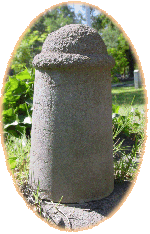 One of the "Frear Stone" finials, shaped to resemble an upright cannon barrel, installed on the coping of the G.A.R. plot at St. Helena in 1882. |
Within weeks, John
Niman's remains were reinterred in the new
G.A.R. Plot. In addition, the members of Kilpatrick Post
hurriedly
made improvements to the plot in preparation for their first Memorial
Day (May 30th). They installed a flagpole in the center of the
plot,
and defined its boundary with a concrete curb. Taking great
pride in
their work, they decorated the coping with elaborate
finials made of
"Frear Stone" (pre-cast concrete), shaped to resemble upturned
cannon barrels. Ten of these were positioned around the
plot: Four at
the corners, two along the curbing facing Spring Street, two on the
sides, and two flanking the entrance step. Completing the
decoration
were the initials "G.A.R.," which were cast into the entry step.
When
Memorial Day arrived, the members of Kilpatrick Post were ready to
impress all who attended. Among their guests were members of
Calistoga's newly formed Governor Morton Post, No. 41, G.A.R., along
with many other
upvalley citizens. Those attending the event gathered on Main
Street and marched in a procession led by
the St.
Helena Band up Spring Street to the newly created G.A.R.
plot. The guests were duly impressed. In the St. Helena
Star
newspaper of June 2nd, 1882, the following comments were made:
[The G.A.R. plot] is
prettily
located, fronting Spring street, and had already been handsomely
improved. Stone curbing surrounded it and a neat flagstaff was
raised
in the center. One grave was already there, that of some
friendless
man who long ago had been interred in the Potters' field and the Post
had removed to this honored resting-place.
|
|||||||||||||||||||||||||||||||||||||||||||||||||||||||||||||||||||||||||||||||||||||||||||||||||||||||||||||||||||||||||||||||||||||||||||||||||||||||||||||||||||||||||||||||||||||||||||||||||||||||||||||||||||||||
|
Many Memorial Day celebrations were held at the G.A.R. plot in the
years to follow. Each year, the traditional parade would form on
Main Street, and march up Spring Street to the cemetery. Kilpatrick Post was somewhat unique among the local G.A.R. posts, in that it maintained a collection of arms issued by the National Guard of California. The Journal of the California Legislature of 1883 noted that the post was issued the following items on April 7th, 1882: Twelve Springfield rifles, model 1863; twelve bayonets, twelve cartridge boxes; one arms chest. How the post made use of these items is not known. Post membership rose quickly in the 1880's. By October 1882, the membership had risen to forty-four. Within the next few years, the membership rose to a peak of sixty-nine. The good times were not to last, though. By 1891, membership was down to about twenty-nine individuals, and worries of sustaining the post were starting to creep into the minds of its members. That year, a comment appeared in the St. Helena Star newspaper that summed up their feelings: Through varying fortunes the "old guard" has been enabled to maintain its existence as an organization, and like the dashing cavalry leader, after whom the Post is named, the "old boys" cling to the ideas of "no surrender" of charter as long as there is a quorum left for the transaction of business. When Memorial Day in 1895 came, the Post membership had dwindled to ten. So few were their numbers, that the Post members concluded to forego the annual procession, oration and singing, as "there were so few soldiers to look after the details." The observance in 1896 was even smaller. |
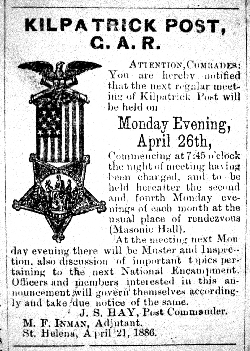 An example of an announcement from Kilpatrick Post, No. 38, G.A.R., published in the St. Helena Star newspaper. |
|||||||||||||||||||||||||||||||||||||||||||||||||||||||||||||||||||||||||||||||||||||||||||||||||||||||||||||||||||||||||||||||||||||||||||||||||||||||||||||||||||||||||||||||||||||||||||||||||||||||||||||||||||||||
Morale among the Post members must have been extremely low in those years, as they watched their beloved Memorial Day pass by with only a minimal observance. It had always been "their day," to honor their fallen comrades, and never forget the deeds that saved the Union from extinction. Even their Auxiliary, the Woman's Relief Corps (which had organized locally in 1885) disbanded in 1893. Those were the prime years for the W.R.C. in the nation, and to see the local Corps No. 12 fail, must have been a hard blow. The year 1897 looked to be even worse than the previous few years for the veterans, but something unforeseen happened that year. Another allied order appeared on the scene: The Sons of Veterans, or "SV." Although the order never formally organized in the upper Napa Valley, there were "at large" members scattered through the area. They, along with the Daughters of Veterans ("DV"), were the next generation, and they appreciated the sacrifices made by their fathers. Memorial Day in St. Helena in 1897 was a big affair. A guard of honor, consisting of fourteen SV members headed by Frank Mixon, worked with the G.A.R. Post members to conduct the parade. The local newspaper commented that their efforts were "very creditable and elicited much favorable comment." The parades continued in this manner for several years, but soon, even the Sons of Veterans faded from the scene at St. Helena. Organization of the Memorial Day parade eventually fell on the Native Sons of the Golden West. Kilpatrick Post, No. 38, left a trail of few records in its final years. Andrew K. Maguire was reported as Post Commander in 1913. When he died in 1922, it was implied in his obituary that the Post had concluded its existence sometime before that, due to a lack of sufficient members to form a quorum at meetings. Perhaps someday a clearer picture of the final years of the Post will come to light. |
||||||||||||||||||||||||||||||||||||||||||||||||||||||||||||||||||||||||||||||||||||||||||||||||||||||||||||||||||||||||||||||||||||||||||||||||||||||||||||||||||||||||||||||||||||||||||||||||||||||||||||||||||||||||
|
Charter Officers of Kilpatrick Post, No. 38
To view a list of all known
officers tabulated by year, click here
|
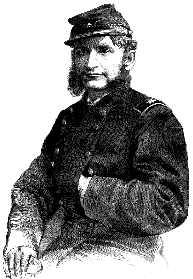 Brigadier General Hugh Judson Kilpatrick (1836 - 1881) |
|||||||||||||||||||||||||||||||||||||||||||||||||||||||||||||||||||||||||||||||||||||||||||||||||||||||||||||||||||||||||||||||||||||||||||||||||||||||||||||||||||||||||||||||||||||||||||||||||||||||||||||||||||||||
POST
MEMBERSHIP, 1886.
|
||||||||||||||||||||||||||||||||||||||||||||||||||||||||||||||||||||||||||||||||||||||||||||||||||||||||||||||||||||||||||||||||||||||||||||||||||||||||||||||||||||||||||||||||||||||||||||||||||||||||||||||||||||||||
|
|
||||||||||||||||||||||||||||||||||||||||||||||||||||||||||||||||||||||||||||||||||||||||||||||||||||||||||||||||||||||||||||||||||||||||||||||||||||||||||||||||||||||||||||||||||||||||||||||||||||||||||||||||||||||||
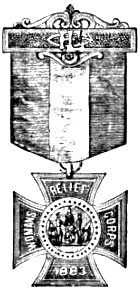 |
 |
||
As noted in
the G.A.R. section
above, the Woman's Relief Corps (W.R.C) was one of the auxiliaries to
the Grand Army of the Republic, the other "sister" organization being
the Ladies of the Grand Army of the Republic (L.G.A.R.). In many
communities, the members of the affiliated ladies' organizations were
as active -- if not more active --
than their male counterparts in the G.A.R.
The Woman's Relief Corps had its origins in the various ladies aid societies that arose after the Civil War. Through the 1870's and early 1880's, these organizations grew and consolidated. The W.R.C. became an officially allied order with the G.A.R. in July of 1883. Their purpose was stated as follows (Source: History of the Grand Army of the Republic, 1888): "... to specially aid and
assist the Grand Army of the Republic and to perpetuate the memory of
their heroic dead; to assist such Union veterans as need our help and
protection, and to extend needful aid to their widows and orphans; to
find them homes and employment, and assure them of sympathy and
friends; to cherish and emulate the deeds of our army nurses, and of
all loyal women who rendered loving service to their country in her
hour of peril; to inculcate lessons of patriotism and love of country
among our children, and in the communities in which we live; to
maintain true allegiance to the United States of America; to
discountenance whatever tends to weaken loyalty and to encourage the
spread of universal liberty and equal rights to all men."
Unlike the
Ladies of the G.A.R., the Woman's Relief Corps
welcomed women into its membership
who were not necessarily related to a Union veteran of the Civil
War. Any "loyal woman," being an American citizen who had never
given aid or comfort to the enemies of the United States of America,
was eligible for membership. The Woman's Relief Corps still
exists today. More information can be found at the following
website:
Like the
Grand Army of the Republic, the W.R.C. formed
community-based organizations (each called a corps, rather than a
post). The St. Helena corps was established in 1885,
and designated as Kilpatrick Corps, No. 12, W.R.C. There
were thirty-two charter members, according to official records.
The inaugural meeting was held
in the
Masonic
Hall in St. Helena at 2:30 p.m. on April 8th, 1885, with a public
installation of
officers at 8:30 p.m. The mustering officer was Mrs.
Elizabeth D'Arcy Kinne of San Francisco, President of the Department of
California and
Nevada, W.R.C. (she later became National President of the
W.R.C.). The inaugural
meeting of the corps was documented in detail in the St. Helena Star newspaper
in its April 9, 1885, edition. A transcription of the
full article appears below:
WOMAN'S RELIEF CORPS
----- Of St. Helena Organized and Officers Publicly Installed. ----- According to
announcement given, Mrs. Lizzie D. A. Kinne, Department President of
the Woman's Relief Corps, came to St. Helena yesterday to organize the
Women's Relief Corps of this place and install the officers. The
object of this organization is "to specially aid and assist the members
of the Grand Army of the Republic and to perpetuate the memory of the
heroic dead. To inculcate lessons of patriotism and love of
country, not only among our membership, but to our children
also." All loyal ladies are eligible for membership, whether any
of their male relatives are members of the G.A.R. or not. The
first attempt at forming a corps here was made about two weeks ago and
some forty members have already signed the charter. The charter
will remain open for thirty days to enable any who desire to join the
Corps.
The first exercises were held in the afternoon at Masonic Hall, and were, for the exemplification of the secret work of the Corps. In the evening the public installation of the officers were held, Mrs. Kinne being the installing officer. A large number of ladies and gentlemen, the members of Kilpatrick Post, G.A.R., and several veterans from the Home, gathered in Masonic Hall at half-past eight to witness the ceremony of installation. After a few remarks by Mrs. Kinne, and an invocation by the Chaplain, the officers elect were presented by Mrs. D. Shakespear, and duly installed in their various seats, Mrs. A. A. Rogers being installed as Senior Vice-President in place of Mrs. M. F. Inman. After the installation, literary and musical exercises were rendered. A trio, by Miss Josie Risley, organ, E. North, violin and A. M. Armstrong, cornet, was followed by a short speech from Col. Carr. The President, Mrs. W. T. Simmons, was called on for a few remarks and responded, as did also Mr. W. T. Simmons and Rev. W. L. Stephens. Edward North recited "Keenan's Charge." Several instrumental selections were given during the evening, and at the close "America" and "Marching Through Georgia," were sung by those present, E. North leading with the cornet. The Woman's Relief Corps of St. Helena is now fully organized, and will in every way carry out the purposes for which it was formed. It is hoped that many other ladies will join the Corps before the Charter is closed. St. Helena's
Woman's Relief Corps was short-lived. Although its membership had
increased to forty-nine by 1891, within two years the corps would be
gone. Its was officially disbanded in March of 1893. Like
its companion G.A.R. organization, St. Helena's W.R.C. met with a
premature demise. There is no clear explanation for this,
as most of the allied orders of the G.A.R. were at their peak in those
years. One possible explanation is that there was competition
from other woman's service organizations in town. Such was the
case in nearby Calistoga, where their local W.R.C. came out second best
to the newly organized Calistoga Civic Club around 1908.
To view a list of all known officers in St. Helena's Kilpatrick Corps, No. 12, arranged by year, click here. 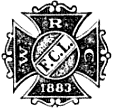 |
|||
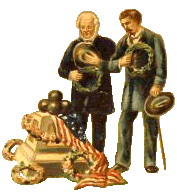 |
In every community across the country, there came the time when the
last
Civil War veteran was laid to rest. In the case of St. Helena,
the identity of our last veteran is still to be determined. The
last veteran may have been William Henry Harrison Smith (1840 - 1933),
founder of Smiths Pharmacy in St. Helena.
Also buried in St. Helena Public Cemetery is John Winfield Scott. He was Calistoga's last Civil War veteran, having served as a Corporal in the 117th Illinois Infantry from 1862 to 1865. He also claimed to have seen prior service in the 9th Illinois Infantry regiment, but I can find no record to confirm this. John was featured in the St. Helena Historical Society's annual "Spirits of St. Helena" cemetery tour in November 2005, under the theme, "Old Soldiers Go West." Al Derrick of Calistoga -- a family member -- gave the presentation. |
||
 G.A.R. membership badge
|
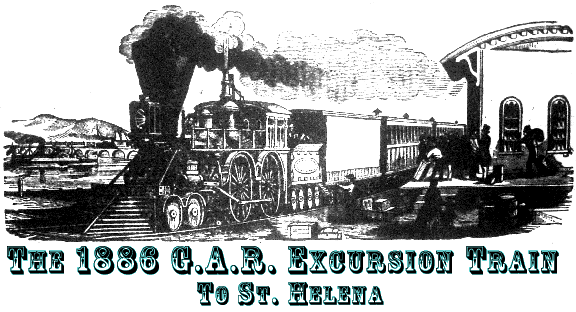 The highest point in the history of St. Helena's Kilpatrick Post, No. 38, G.A.R., took place on August 11th, 1886, with the arrival of the Grand Army Excursion Train from the 20th National Encampment at San Francisco. Each year, a city in the United States would be selected to host the National Encampment of the organization. San Francisco hosted the encampment (a convention) in 1886 and 1903. The 1886 Encampment began on Monday, August 2nd, and lasted through Saturday, August 7th. It was a big event. St. Helena's Kilpatrick Post sent its own delegation of G.A.R. men to the encampment. The St. Helena Star newspaper also contributed to the excitement of the occasion by publishing a "Grand Army Edition" on July 16th. The special edition was distributed in San Francisco as a Napa Valley souvenir. The week following the encampment was filled with special excursions, to allow attendees to visit various parts of California. Many of the participants were from the East Coast, and had never visited the Pacific. On Monday, August, 9th, an excursion was made across San Francisco Bay to Oakland. On Tuesday, a train took the "excursionists" to San José, California. On Wednesday, August 11th, a two-day excursion was made to Sacramento via the Napa Valley. Transportation for such a large group in those days was no small task. Special committees were organized well in advance, to plan these trips. Just the task of conveying the large contingent across San Francisco Bay was no small matter, there being no bridge connections in those day. The excursion began with the "excursionists" meeting at the Ferry Building at the foot of Market Street in San Francisco at 7:30 a.m. There, they boarded steam ferries bound for Vallejo. A specially chartered train awaited them at Vallejo, to convey the passengers northward into the Napa Valley. By 10:00 a.m., the train reached Napa, where the visitors were treated to a hasty reception and barbecue. Leaving Napa, the train continued to St. Helena, arriving there at 12:45 p.m. When the train rolled into town, history was made. There had never been such an assemblage of war heroes in the Napa Valley, and there never would be again. The story of that grand day was captured in the pages of the St. Helena Star newspaper on August 13th, 1886, reprinted in full below: TAKEN BY STORM!
----- St. Helena Invaded by the Grand Army. ----- THE TOWN IN GALA-DAY ATTIRE. ----- The Magnificent Reception Tendered the Nation's Brave. ----- At Least 4,000 People Assembled in Hunt's Grove. ----- "Tramp,
Tramp, Tramp the boys are marching; Cheer up Comrades, see they come."
St. Helena is known far and wide for her
open-handed and public-spirited hospitality -- her citizens are ever
ready to extend a cordial welcome to all comers and entertain such,
with a lavish hand that causes the stranger to long to linger within
her hospitable precincts. The announcement that an excursion,
composed of members of the Grand Army of the Republic, would visit St.
Helena on August the 11th, aroused the patriotic enthusiasm of our
people and for weeks business of all kinds has been laid aside in the
united endeavors to make such preparations for the reception of the
expected guests as should be creditable to the most beautiful and
highly favored valley in the State. The numerous Committees,
having the affair in charge, worked hard and as the sequel showed,
effectively. Over $500 in cash was subscribed in addition to more
than enough provision and hundreds of dollars worth of wine. Our
towns-people, particularly in the business portion, gave further
evidence of their patriotism in the elaborate decorations of their
buildings and on Wednesday morning Main street and adjacent
thoroughfares, was gay with the glorious stars and stripes and Grand
Army emblems, while on every hand "Welcome to the G.A.R." appeared
conspicuous.HUNT'S GROVE,
At all times a "Bower of Beauty,"
presented a most attractive and inviting appearance. At the
entrance a huge arch was erected under the supervision of that tasteful
artist, Henry Rahn. The two side pillars were each composed of
four posts, draped in evergreen and flowers and forming squares;
mid-way up these posts, on a platform, rested stacks of arms and war
accoutrements, while from a high staff reaching far above the pillars
were suspended numerous flags and streamers, welcome mottoes,
etc. Suspended over the gate-way from pillar to pillar was a
purple silk banner, on which appeared in large gold letters the word
"Welcome." At about the center of the grove, arranged in squares,
with a view to best take advantage of the cooling shade, were spread
the lunch tables heavily laden with the choicest products of Napa
Valley's kitchens, gardens and markets. In a prominent place, in
full view of all tables, was the stand erected for the use of band and
speakers. By far the most conspicuous and handsomest, and we
might add the best patronized object inside the grounds, was the "Wine
Stand" where Napa Valley wine-growers united in the exhibition and
gratis distribution of their far famed products. This stand was
erected under the direction of Louis Zierngibl, assisted by W. Noble
and
Mr. Ebermyer [sic]. The arrangement of this stand showed grate
taste on the part of those who had it in hand -- the shelving, etc.,
for display of wines were backed against a huge tree, which in turn was
surrounded by the counter over which the wine was dispensed. In
the center was the motto, "Napa Valley Winegrower's Greeting to
G.A.R." The Napa Valley Wine Co., Edge Hill Vineyard Co., J.
Schram, each had beautifully decorated sections of this stand, marked
by appropriate signs, in which they made a fine exhibit of bottled
wines. G. Niebaum, of Rutherford, also sent a large quantity of
wine in bottles. The following winegrowers sent contributions of
wine in kegs: Beringer Bros., Mrs. Weinberger, T. Parrott, E.
Heymann, J. H. McCord, H. W. Crabb, Jno. Thomann, J. Laurent and F.
Sciaroni. (the latter's contribution being a quantity of his famous
sherry.)THE DAY
Was a warm one, the thermometer ranging much higher
than the majority would have wished, for the comfort of home people and
visitors. With this one exception, however, everything was
auspicious -- the well sprinkled streets aided in cooling the
atmosphere, and once lounging in the luxurious shade of Hunt's Grove,
one had no difficulty in keeping cool. Country delegations
commenced pouring [in] at an early hour and by the time the
excursionists arrived there were hundreds of people in town from
Calistoga, Howell Mountain, Pope, Chiles and the Lower Napa Valley.THE TRAIN
Bearing about 1,000 G.A.R. excursionists, arrived
about 12:45 p.m., and was welcomed at the depot by a vast concourse of
people, whose cheers, added to the music of the band, assured the
visitors of the heartiness of their reception. Kilpatrick Post,
headed by the St. Helena brass band, escorted the guests to Hunt's
Grove. General Logan and party came to the grounds in carriages
and the former was escorted to the grand stand by Major Hay, Commander
of Kilpatrick Post. Mrs. Gen. Logan, Gov. Alger and wife, of
Michigan, and others, with the proper escort committees, followed and
took seats on the stand, while the band discoursed some of its most
patriotic airs. By this time the crowd surrounding the stand and
extending far out in the grove on either side, was simply "immense" and
reminded us of the crowd we saw outside the Mechanics' Pavilion in San
Francisco the night we "got left."Major J. S. Hay called the vast assemblage to order and in a few well chosen words welcomed the guests to St. Helena. He then introduced Col. B. O. Carr as Chairman of the Day. Col. Carr made a few facetious remarks, disclaiming any oratorical powers and concluded by introducing |
||
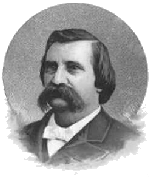 Maj. General John A. Logan U.S. Senator, Illinois, in 1886 proclaimed Memorial Day in 1868 |
GEN. JOHN A.
LOGAN,
Whose appearance on
the stand was greeted with the wildest
enthusiasm. He said; "It is peculiarly gratifying to the
old soldiers
present to-day, to receive so cordial a greeting -- your generous
welcome fills our hearts with gratitude. Nothing could be more
gratifying to the Comrades of the Grand Army, who have been visiting on
your coast, than the kind and patriotic feelings evinced on every
side. Our reception has been far beyond our proudest
anticipations. I
do not know of any other place in the world where such generous
hospitality is meted out as in California; no other place where such a
variety of products are grown as on California soil. There seems
to be
only one trouble here in Napa Valley," he said; "that is, you fail to
grow grapes that produce wine -- however, I may be mistaken about
this." (A voice in the crowd -- "we'll show you whether we can
produce
wine or not") The General then went on to pay a glowing tribute
to
California and the Napa Valley and the loyalty of our people. In
conclusion he said; "I want to tell you one thing for your own good;
don't invite the Eastern people to come and see you again -- if you
do," said he, "we'll all come and we will be apt to crowd some of you
out of this glorious State." He said that when the Grand Army
people
all return home and tell of their reception in California and of the
wonderful things they have seen, everybody back there will want to
visit this Coast and we will be in danger of another invasion.
Gen.
Logan's remarks, of which the above are only a brief and imperfect
synopsis, were received with applause. Col. Carr then introduced
Gov.
Alger of Michigan, who spoke for about five minutes in a jocular vein
and concluded by drinking a toast to Napa Valley in some of our valley
wine. He afterwards introduced in turn Mrs. Logan, and his wife,
both
ladies stepping to the front of the platform and gracefully bowing
their acknowledgement of the cheers which greeted them. General
Logan
and party were then conducted to a table near at hand and served with a
substantial luncheon. The stand was given up to the band, who
enlivened the occasion with patriotic music and a season of feasting,
and visiting ensued until the excursion train left at three
o'clock.
The day was a memorable one for St. Helena -- there must have been over
4,000 people in the grove, and the demonstration was the largest ever
held here. St. Helena honored herself, in her reception of the
brave
defenders of our country and the occasion will long be remembered as
one occuring but once in a lifetime.
|
||
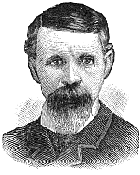 Bvt. Maj. General
Russell A. Alger Gov. of Michigan in 1886 later U.S. Sec. of War |
NOTES.
The
Ladies Reception Committee consisted of Mrs. Col. Carr, Mrs.
Weinberger,
Mrs. Castner, Mrs. Bingham and Mrs. Ink.
Mrs. D. O. Hunt held quite a reception
Wednesday as the G.A.R.
guests were returning to the cars. She was reclining in her chair
in
front of the house and a great many of the departing guests paid their
respects to her. Mrs. Gen. Logan sat down and had quite a chat
with
Mrs. Hunt, who was charmed with her visitor. General Logan also
stopped and chatted with the fair invalid for a few minutes until the
train signals warned him to leave. We hope that the excitement of
the
day will not have a bad effect on her.The St. Helena Brass Band looked well in their new uniforms, donned for the first time, and their playing was generally praised. Among Calistogians present, we noticed Major and Mrs. G. W. Johnson, Judge Collins, Editor J. L. Multer, W. E. Fisher and wife, and others. There were a large delegation present from Napa, among whom we noticed Judge Hartson, Burnell C. Hartson, County Clerk Neilsen, Treasurer Arnold, Auditor Brown, D. M. Stockman, and others. The Calistoga people did excellent service in the reception, they had a table of their own, which was well laden, and presided over by experienced persons. This generous spirit was the subject of much favorable comment. The citizens of this community should feel grateful to D. O. Hunt for generously donating the use of his beautiful grounds. When we consider how little could have been done without these, the magnitude of the favor is apparent. Among the many distinguished gentlemen present were: National Commander, ex-Governor Fairchild of Wisconsin, Vice Commander, General Backus, of San Francisco; Department Commander Col. Smedburg and may others. Station agent Backus and his wife very kindly placed their cozy cottage at the disposal of the Ladies Committee, and many of the guests very gratefully took advantage of the thoughtful offer to rest in seclusion from the crowd. Among these were Gen. Logan and party. The wine stand was the center of attention -- In addition to the three gentlemen previously mentioned, we noticed Louis Trainor, R. S. Heath, and others, all busy in dispensing Napa Valley's beverage to the thirsty crowd. Hundreds of bottles of wine were given away to Eastern visitors, who carried them off as reminders of their visit. the Escort Committee, appointed by the General Committee to go down on the train and meet the excursionists, consisted of Col. Carr, Major Hay, Jacob Schram, T. H. Ink, Hon. H. A. Pellet, E. C. Priber and F. Beringer. In addition to these a committee was appointed by the Post, among whom were M. F. Inman and A. B. Swartout. The Committee of Arrangements were criticized for not admitting teams to the grounds during the entertainment, and in justice to these we would say that this was one of the stipulations on which the grounds were obtained. When the members of this Committee, which contributed so much to the success of the affair, were willing to tie their horses outside and walk down to the grove with their families, outsiders should not growl at a proviso which was quite right and proper. During the stay of the veterans at St. Helena it was surprising to note with what alacrity the man from Maine grasped a bottle of wine in each hand to take home among his prohibition brethren. Kansas State is also prohibitory but her representatives in California all agree that Napa Valley wine is par excellence, and a sample of the different varieties were carried home as souviners [sic] of St. Helena's hospitality. The ladies, too, found in the sweet Angelica a soothing and pleasant drink and great was the demand thereof. Taken altogether Maine and Kansas didn't prohibit worth a cent. While waiting at the depot for the departing trains, we overheard one stately old lady from the east exclaim, "I am charmed with St. Helena; our reception and entertainment at other places has been all that heart could desire, but they are not to be mentioned in the same breath with St. Helena. The St. Helena people have given us the most hearty, the most liberal, the most generous reception and entertainment we have yet had!" There were at least twenty of the visiting guests surrounding the old lady as she spoke and they all endorsed what she said, by saying, "That is so; you are right, there" etc., etc., showing conclusively that they were highly pleased with their entertainment here. 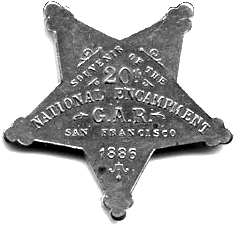 |
| Acknowledgments |
|||
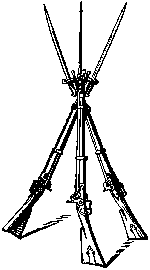 |
|
||
| The author
would like to
acknowledge several individuals and organizations who have helped to
preserve and honor the memory of St. Helena's Civil War veterans: |
|||
| St.
Helena Public Cemetery and the St. Helena Cemetery Association, with
special thanks to Paula and Connie
Soakland. |
|||
| St.
Helena Historical Society, with special recognition to Mariam Hansen,
Kathleen Kernberger, and Jeff Farmer. |
|||
| St.
Helena Public Library (George & Elsie Wood Public Library), for the
use of their historical books and microfilms. |
|||
| The
County of Napa, for care and upkeep of the G.A.R. Plot at St. Helena
Public Cemetery. |
|||
| Contact
Information: Dean A. Enderlin 2950 Lake County Highway Calistoga, CA 94515 E-mail: enderlin@sonic.net Member: |
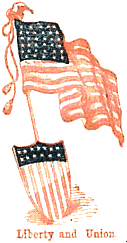 |
| Website Launched
Veterans Day 2008 |